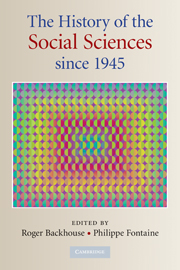7 - Human Geography
Published online by Cambridge University Press: 05 June 2012
Summary
Introduction
Although some aspects of the study of geography are common across a large number of countries, nevertheless a marked ‘geography of geographies’ has emerged since the Second World War. Until then, there was considerable common ground that geography was the study of areal differentiation or chorology; it described and provided accounts for inter-regional differences in environments, human activities, and the interactions between the two. The widely adopted foundations for such an approach were laid down by German and French geographers – with a major American defence of that approach published in 1939 (Hartshorne 1939; see also Entrikin and Brunn 1990; Hartshorne 1959).
Those foundations were rapidly eroded in the anglophone world during the immediate post-war decades. Human geography in the United Kingdom, the United States, and most of the former British Empire took a new set of paths and contacts with practices in other language realms declined, although Scandinavia and the Netherlands were exceptions – much of the research done there is published in English and contacts with English-speaking geographers were strengthened post-1950, with the anglophone ‘new geographies’ adapted to local circumstances (Öhman and Simonsen 2003). Some national traditions were sustained in other language realms, such as the dominance of the regional monograph in French practice (Clout 2009; see also Clout 2003), but many aspects of the ‘new paths’ taken within anglophone geography were later adopted there in some form, fostered by two-way contacts (not least attendance at the annual meetings of the Association of American Geographers, which took on a pronounced international complexion from the 1990s on).
- Type
- Chapter
- Information
- The History of the Social Sciences since 1945 , pp. 155 - 183Publisher: Cambridge University PressPrint publication year: 2010
References
- 3
- Cited by



